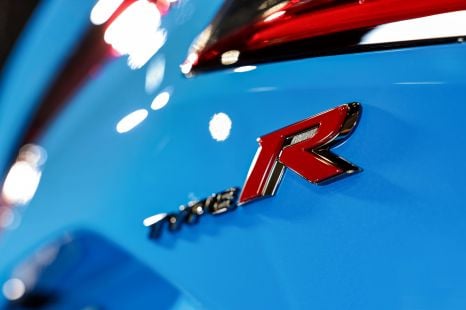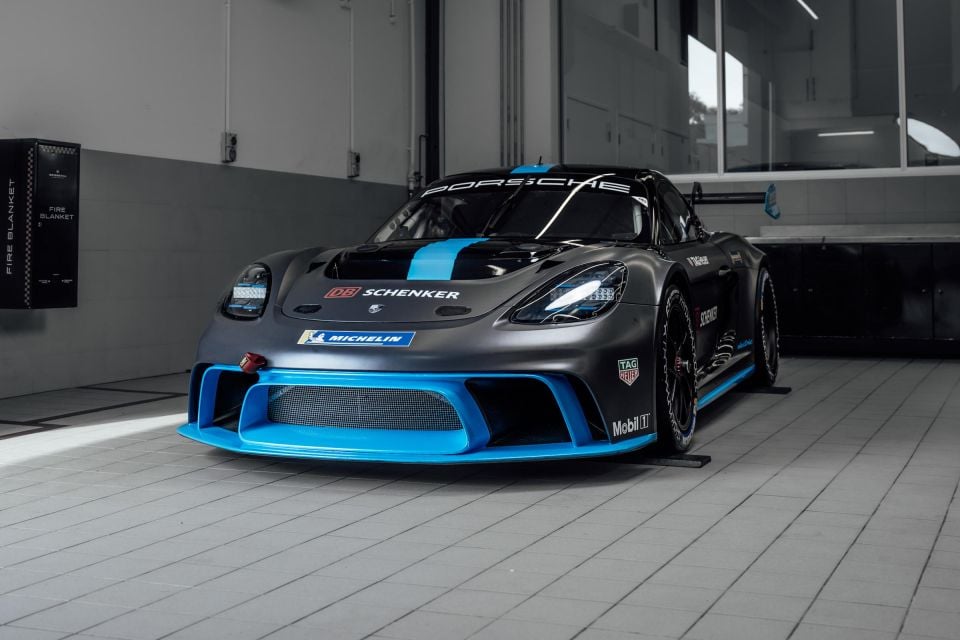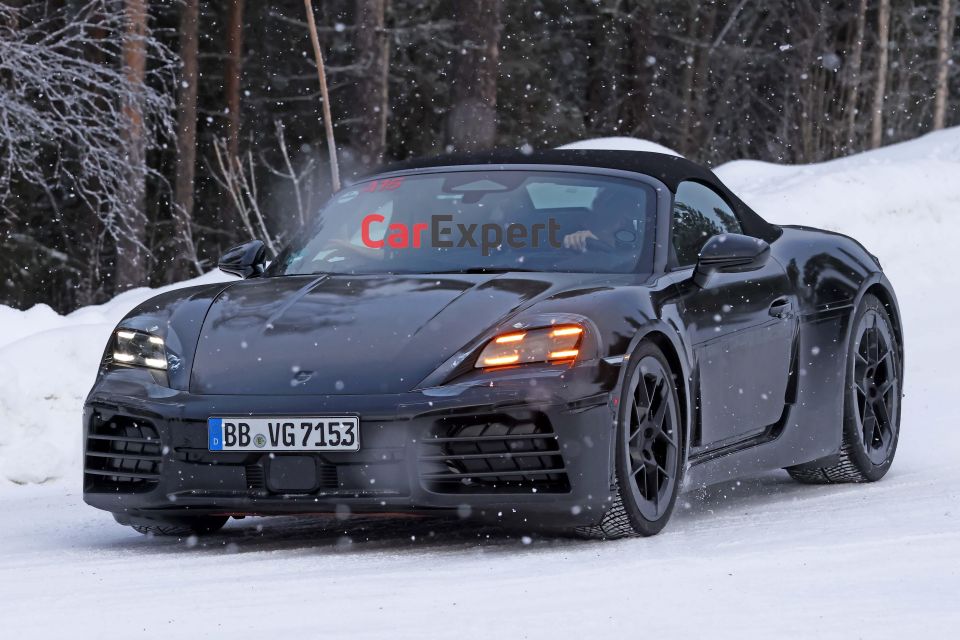

Damion Smy
Honda Prelude Type R ruled out... for now
10 Hours Ago

Senior Contributor
The first-ever fully electric Porsche sports car model will be the 718 Boxster, and it could debut in less than 12 months’ time.
The new-generation ‘983’ electric versions of the 718 Boxster convertible and 718 Cayman coupe will be jointly developed on an identical new-generation EV platform, but it’s expected Porsche will unbox the Boxster first.
For the unaware, the Boxster was around well before the Cayman. In fact, the first-generation 986 drop-top sports convertible was around for a full eight years without a hardtop compatriot, and the second-gen 987 Boxster launched in 2005, ahead of the Cayman coupe of that generation.
At the Australian debut of the Porsche GT4 e-Performance electric race car prototype, project manager Björn Förster said he imagines the Stuttgart marque would see fit to launch Boxster first as an innovation leader.

“Since the bigger innovation is to have an open electric sports car, if it was my company, I would go for the open verison first,” he said.
“We started way earlier [on the GT4 e-Performance], and we’ve already been touring the market for almost 18 months, and the electric Boxster is coming soon.”
Mr Förster wouldn’t go into any specifics on the model lineup, powertrain details or more info on what to expect, but he did suggest that there will be a typical flow-through range launch, kicking off with a more attainable base version, before the more advanced and performance-focused variants come.
“At the moment, we will surely not build up a race car on the base model. The base model will be introduced first,” he said.
“So it will need some time for a more performance-oriented version of the 983 [aka new-gen 718 models] will come, and then we will be on the same timeline as the Cayman, maybe.”

Specifics around battery design and capacity are yet to be determined, but in the GT4 e-Performance racer there’s an 80kWh battery pack, dual electric motors (meaning all-wheel drive), and a 900-volt architecture, allowing it to recharge in as little as 15 minutes at a full-speed 350kW charging station using a Type 2 CCS combination plug.
Some of those elements may flow through to the Boxster EV, but one would assume that a rear-wheel drive model may form the basis, with all-wheel drive reserved for the faster versions.
Mr Förster suggested that all-wheel drive has a vital role to play in fast EVs, not just because it makes them faster from 0-100km/h, but also because having dual motors (one at each axle) can allow a saving of both money and weight.
“If you add all-wheel drive on a combustion engine car, yes, you raise your traction a bit, but you’re also adding weight,” he said.
“On electric cars, it’s a completely new playground.

“If we only had a rear-wheel drive car, we would need about 250 kilograms more batteries to reach the same drive time,” he said of the GT4 e-Performance racer’s capability to run for between 25-30 minutes at full flog.
“And that’s massive. So the decision to go for all-wheel drive, it’s very clear for a race car,” he explained, and it’s worth noting the GT4 e-Performance weighs “less than 1550kg”, which is circa 200kg more than the petrol 718 Cayman it’s based upon.
“The advantage is to save weight, but also to save batteries – because batteries are expensive, you also save money. If you can reduce both of those by putting in an additional motor in the front which doubles the power of the car? It isn’t even an option,” he said.
Mr Förster also outlined his desire for the new-gen EV models to have some kind of Porsche aura to them, indicating that there may be some special audio features to increase the emotional bond with the driver – and there may even be some inspiration drawn from the likes of the Hyundai Ioniq 5 N in terms of engaging the driver.

“You’re talking to a motorsports guy,” he said of the ‘gearshifts’ in the electric Ioniq 5 N, which mimics the feeling of a dual-clutch auto gearbox when accelerating by pulsing the motors to change the ‘revs’.
“It doesn’t make you faster, but… imagine a 983 [Cayman or Boxster electric] GT4 – therefore, it’s an emotional car, so this could be an option where, maybe, this car comes out, and it’s just mandatory for sporty electric cars to have a shifting simulator,” he said.
“Not because of getting the car faster,” he asserted. “No record on any racetrack will be done with manual shifting. It even shows you the revs, which are fake. But if I’m working in motorsport, I would avoid that.”
Whether or not there should be a soundtrack outside the car, as well as inside, is another contentious item, Mr Förster said.

“One major topic is the sound. The regular road car, the EV, will always have a speaker [under the car] but it’s up to you as a brand if you use this speaker to fulfil [pedestrian protection] measures or if you use it for a sound you can experience,” he said.
“As soon as it is an emotional and cool feature, you should have it.
“Hyundai did it in a very good way, I would say. It’s completely fake, but people are loving it. So I think we need to come with something.”
If that isn’t your idea of what a Porsche should sound like, you may still be able to buy a petrol-powered 718 model for a few years yet, with speculation that Porsche will offer dual model streams for different buyers for some time.
Porsche will offer the existing petrol-powered Macan SUV alongside the recently revealed electric version, at least in some markets.
Where expert car reviews meet expert car buying – CarExpert gives you trusted advice, personalised service and real savings on your next new car.
Matt has more than a decade of experience in automotive journalism, and loves exploring the pros and cons of new cars, delving into deep-dive industry stories, and going for a drive just for the fun of it.


Damion Smy
10 Hours Ago


Damion Smy
12 Hours Ago


Damion Smy
13 Hours Ago


Matt Robinson
16 Hours Ago


Damion Smy
16 Hours Ago


Damion Smy
1 Day Ago